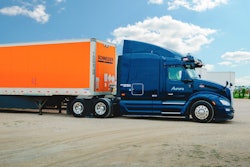
The White House on Tuesday unfurled its U.S. National Blueprint for Transportation Decarbonization, outlining the Biden administration's framework for cutting transportation emissions.
Developed by the Departments of Energy (DOE), Transportation, Housing and Urban Development and the Environmental Protection Agency (EPA), the Blueprint is a strategy for cutting all greenhouse emissions from the transportation sector by 2050. The transportation sector – accounting for all modes of travel via land, air and sea to move people and freight —accounts for one-third of all domestic greenhouse gas emissions.
“The domestic transportation sector presents an enormous opportunity to drastically reduce emissions that accelerate climate change and reduce harmful pollution,” said U.S. Secretary of Energy Jennifer M. Granholm. “DOE is prepared to implement this Blueprint alongside our partners within the Biden-Harris Administration to ensure all Americans feel the benefits of the clean transportation transition: good-paying manufacturing jobs, better air quality and lower transportation costs.”
It's been an active few weeks for the Biden Administration and clean air policies.
The EPA in late December updated emission standards for heavy-duty commercial vehicles for the 2027 model year, tightening tailpipe NOx limits to a level of 80%-plus below the current standard. Last week, it proposed tighter particulate matter/soot regulations, citing health concerns that the fine particles penetrate deep into the lungs and can result in serious health effects that include asthma attacks, heart attacks and premature death.
The 88-page Blueprint will be followed by more detailed decarbonization action plans, to be developed and implemented by these agencies in cooperation with governments at the state, local and Tribal levels, philanthropic organizations, the private sector and global partners, and lays out to strategic pathways for any transportation modes. While it doesn't recommend actions or make directives, the Blueprint does, however, infer that trucking's path to zero emissions will not likely include a significant period of time devoted to near-zero emissions.
A memorandum of understanding signed in September among all the partner agencies notes that for heavy duty vehicles, the group would seek to "identify and remove barriers to the use of hydrogen fuel cells and related infrastructure" and "coordinate work that supports transformations of the electrical grid, charging infrastructure investments, and equitable, fair use of rights-of-way to support increased on-road vehicle electrification," while "[accelerating] utility, automotive, truck, fleet and electrical equipment manufacturer collaboration on smart electric vehicle charging to leverage the synergies between the transportation and power systems."
The development and deployment of sustainable fuels, to the chagrin of NATSO, representing America's travel centers and truck stops, and SIGMA: America's Leading Fuel Marketers, was reserved for the aviation industry. NATSO and SIGMA collectively represent more than 80% of fuel retailers in the United States.
"We appreciate that the Biden Administration is prioritizing alternative fueling strategies to reduce carbon emissions and advance the adoption of emerging fuel technologies, but we are disappointed that the Administration ignored the harmful effects that come with incentivizing sustainable aviation fuel above over-the-road fuels that can be produced at less cost and have a more favorable environmental impact," the agencies said in a joint statement. "The nation's fuel retailers are eager to continue investing in alternative fuels, including electric vehicle charging, natural gas and hydrogen and to offer consumers new fueling options alongside renewable diesel and biodiesel, which have been reducing carbon emissions for decades."
[Related: Highly incentivized renewable diesel impacting supply, price of conventional diesel]
The Sustainable Aviation Fuel Grand Challenge is the result of the Department of Energy, the Department of Transportation, the U.S. Department of Agriculture and other federal government agencies collaboratively developing a comprehensive strategy for scaling up new technologies to produce sustainable aviation fuels (SAF) on a commercial scale.
The SAF tax credits established under the Inflation Reduction Act and promoted in the Biden Administration's Blueprint, the fueling groups contend, incentivize SAF production above renewable diesel and biodiesel.
"There are no new emissions savings with SAF. Increased use of SAF simply transfers emission reductions from the ground, where people live and work, to the skies as commercial trucks have less access to biodiesel and renewable diesel. It is inappropriate for the aviation sector to force taxpayers and consumers to underwrite their ambitious climate commitments."
NATSO and SIGMA further argue that touting sustainable aviation fuel as a "new method" for reducing transportation carbon emissions ignores the fact that it will unravel decades of existing carbon reductions in over-the-road transportation and increase fuel prices for commercial fleets.
"SAF proponents inaccurately assert that SAF production results in new, incremental reductions in carbon emissions. This is false," the agencies said. "In fact, renewable jet fuel production is simply designed to displace existing and future, less expensive renewable diesel production."













